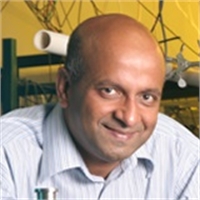Abstract: Critically tuned anomalous dispersion produces conditions under which the group velocity of light can far exceed the vacuum speed of light, without violating causality or relativity. This is often called the Fast Light effect. In recent years, we have shown that this effect can be employed to enhance significantly the sensitivity of metrological devices. In this talk, I will describe first how the use of a fast light medium can lead to an enhancement of the sensitivity of a laser-interferometric gravitational wave detector by nearly a factor of 20. This would correspond to a factor of 8000 increase in the volume of space accessible to such a detector. Next, I will describe the superluminal ring laser (SRL), which makes use of a fast light gain medium. In an SRL, the spectral sensitivity to a change in the length of the cavity is enhanced by a factor of as much as a million. We will describe how the SRL can be used to realize ultrasensitive gyroscopes and accelerometers, with potential application to GPS denied navigation. A large area SRL gyroscope is also expected to be sensitive enough to measure terrestrially the gravitational frame dragging effect, known as Lens-Thirring rotation, as a high-precision test of General Relativity. We will also discuss the prospect of using the SRL for ultra-precise sensing of other effects, including strain and magnetic field.
Biography: Dr. Selim Shahriar is a Professor in the Department of Electrical Engineering and Computer Science, and in the Department of Physics and Astronomy at Northwestern University. He is also the Director of the division of solid state and photonics within EECS. Dr. Shahriar received his Ph.D. from MIT in 1992. He has published 432 papers, including 153 in peer-reviewed journals.. His research interests include Applications of Slow and Fast Light, Quantum Computing with Trapped Atoms, Gravitational Wave Detection, Tests of General Relativity, Holographic and Polarimetric Image Processing, Nanophotonics, Atomic Clocks, Atom Interferometry, and Nanolithography using Bose Condensates. He is a member of the LIGO Scientific Collaboration and a Fellow of SPIE and OSA. Group URL: http://lapt.eecs.northwestern.edu/


